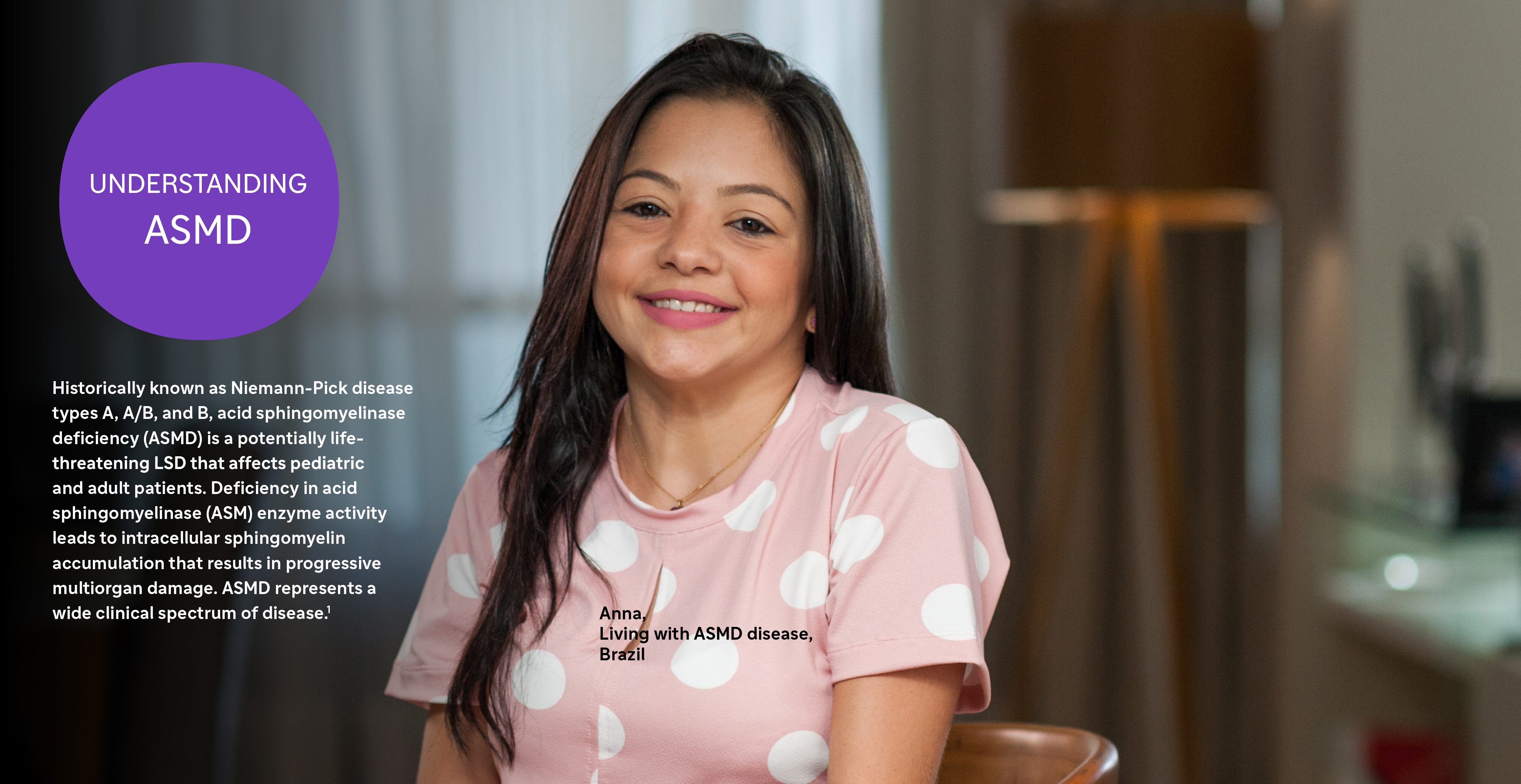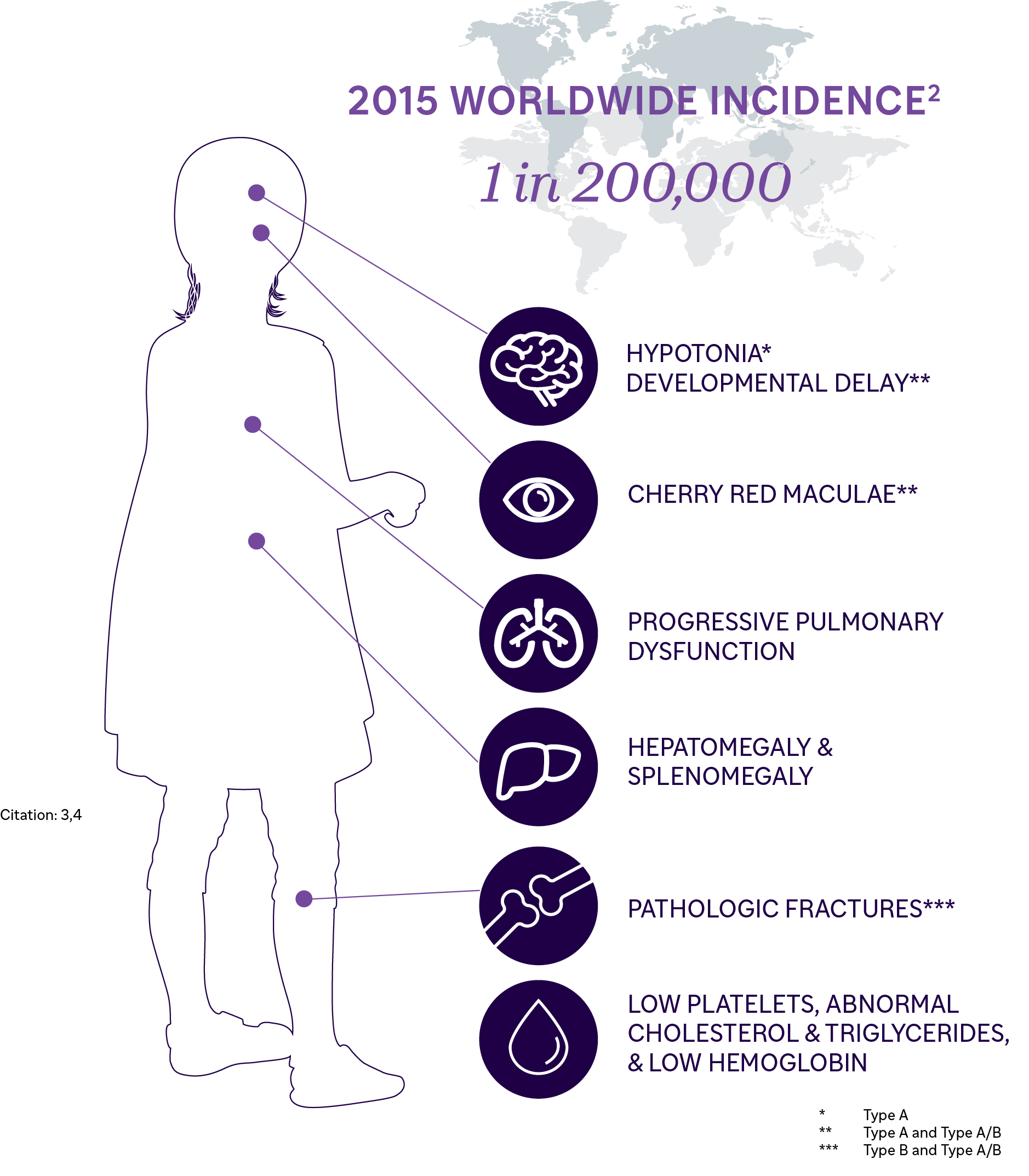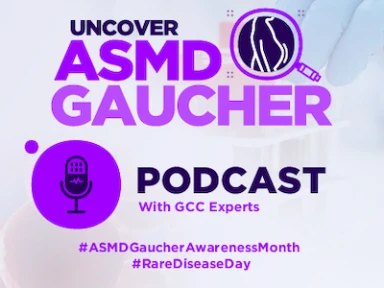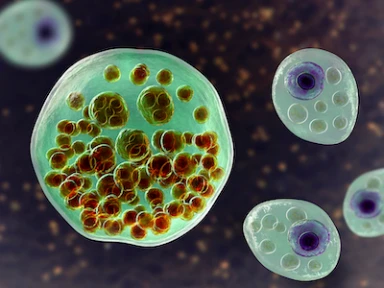ASMD
GENETIC PROFILE
ASMD is an autosomal recessive LSD caused by pathogenic variants in the ASM enzyme–encoding gene sphingomyelin phosphodiesterase 1 (SMPD1).
Sphingomyelin helps regulate cellular processes, such as cell cycle regulation, cell signaling, and apoptosis.
When ASM activity is deficient, sphingomyelin cannot be sufficiently metabolized; it accumulates in lysosomes, particularly in macrophages and hepatocytes. This accumulation damages cells in multiple organs, leading to potentially life-threatening complications.
Males and females have an equal chance of being affected4
|
Type A |
 |
|
|
|
Type A/B |
 |
|
|
|
Type B |
 |
|
|
IMPORTANCE OF EARLY DIAGNOSISThe rarity of ASMD, heterogeneity of its manifestations, and challenging differential diagnosis can result in delayed diagnosis and management of patients. Early diagnosis of ASMD is critical for appropriate management. |
 |
|
Identifying known disease-causing alleles of ASMD allows for
|
 |
 |
HOW TO DIAGNOSE |
|
A simple enzyme activity test can be performed on a DBS (dried blood spot) to indicate reduced ASM activity. |
 |
| A positive DBS enzyme assay is highly indicative of ASMD, but an analysis from a whole blood sample and/or genetic testing is required to confirm the diagnosis.5 | |






